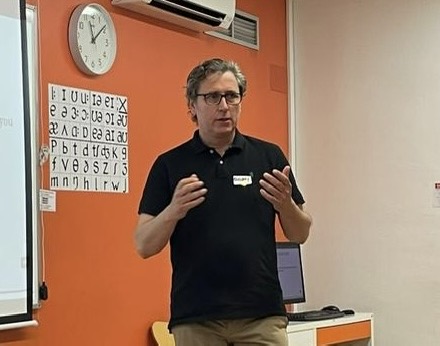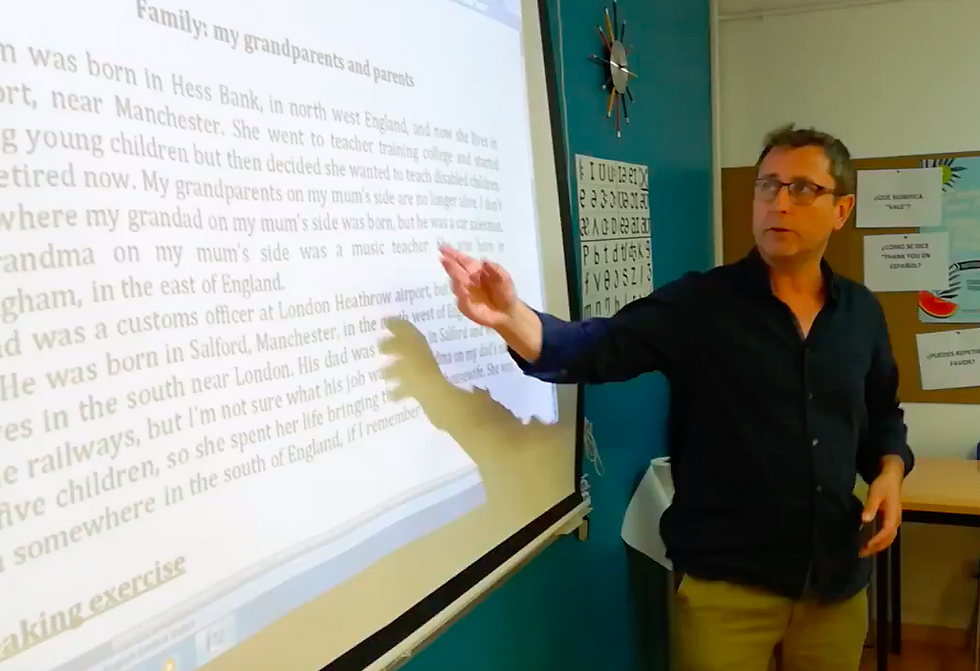An introduction to the PROOF method
- Barnaby Griffiths

- Jul 10, 2020
- 3 min read
Updated: Oct 31

I have been observing classes taught by language teachers for over 20 years, and in that time I’ve come to various conclusions about the best ways to communicate content to learners in the classroom. Over the years, I have turned those conclusions into a method for helping language teachers in their daily work: the PROOF method. This blog is intended as an introduction to this innovative method of coaching designed to work on improving the learner’s language and communication.
First of all, the acronym: PROOF stands for Performance, Rehearsal, Observation, Organization and Feedback, which constitute the five pillars of the method. Note that they are in no particular order, but are all required for the method to work effectively.
Performance: A key concept to understand if we want to improve our communication is that any spoken interaction constitutes a performance. Like actors on the stage, we are performing when we engage in any oral interaction. This has huge consequences for how we prepare any communication.
Rehearsal: And just as actors perform, they must first rehearse. Note that rehearsal is not the same as practice… can you think of the differences?
Observation: In order to help learners improve their communication, the teacher or coach needs to first observe them in action.
Organization: Rehearsal and subsequent performance would not be possible without organizing the content of what we want to communicate.
Feedback: The teacher or coach’s feedback on the learner’s performance is paramount in identifying which areas to work on to improve communication.
Here is an overview of how I use the method with my learners in a typical session:

1. I observe the learner in a real-life or simulated communicative situation (the latter is more common as a speaking activity in the classroom). This will entail taking notes on all elements that enhance or interfere with communication of the message: from language issues (divided into pronunciation, vocabulary and grammar) to the impression made on the listener. Clearly, this can become quite personal for the learner, which is why one-to-one sessions allow for more sensitive areas to be addressed, while group teaching and coaching will focus more on generic issues, and the learner can receive more personal feedback in writing or a brief 1-to-1.
2. I will give my learners feedback, which will both praise their strengths and offer constructive ideas to work on any weaknesses. This feedback is extremely detailed and based on exactly what learners have said/how they have performed during the real-life or simulated communicative situation. It is a very interactive process, with the learners fully immersed in it: learning new language, trying out challenging new sounds or other phonological aspects of language, asking questions, confirming or rejecting hypotheses about language, creating new ones…
3. Together, the teacher or coach and learners will design rehearsal sentences to work on those precise elements that have emerged from the observation and feedback process. How this is done is key to the success of the process.

The language teacher or coach must have an extensive knowledge of language, language learning and communication strategies and tools, to name just a few aspects, as these will form the basis of what the learners take away to help them do the work inherent in improving their communication. In other words, learners rehearse outside class, and classes or sessions are used to collect material for learners to work on and discuss the best ways for them to do this.
As I mentioned at the beginning, this blog was just to provide a taste of my PROOF method of Language and Communication Coaching (LCC) and give you an idea as to how it works, given that it constitutes a new approach to second language learning and instruction. If you are interested in learning more, my LCC book has been described as "a practical gem" (Teacher Trainer, Leyla Masmaliyeva), "the clearest and most grounded articulation I've read of how a humanistic approach to language teaching can be put into practice" (Oxford TEFL Director and teacher trainer, Duncan Foord) and "a timely and valuable contribution to ongoing conversations about how we can support learners in more meaningful and personalised ways” (ELT author and teacher trainer, Scott Thornbury).

Comments